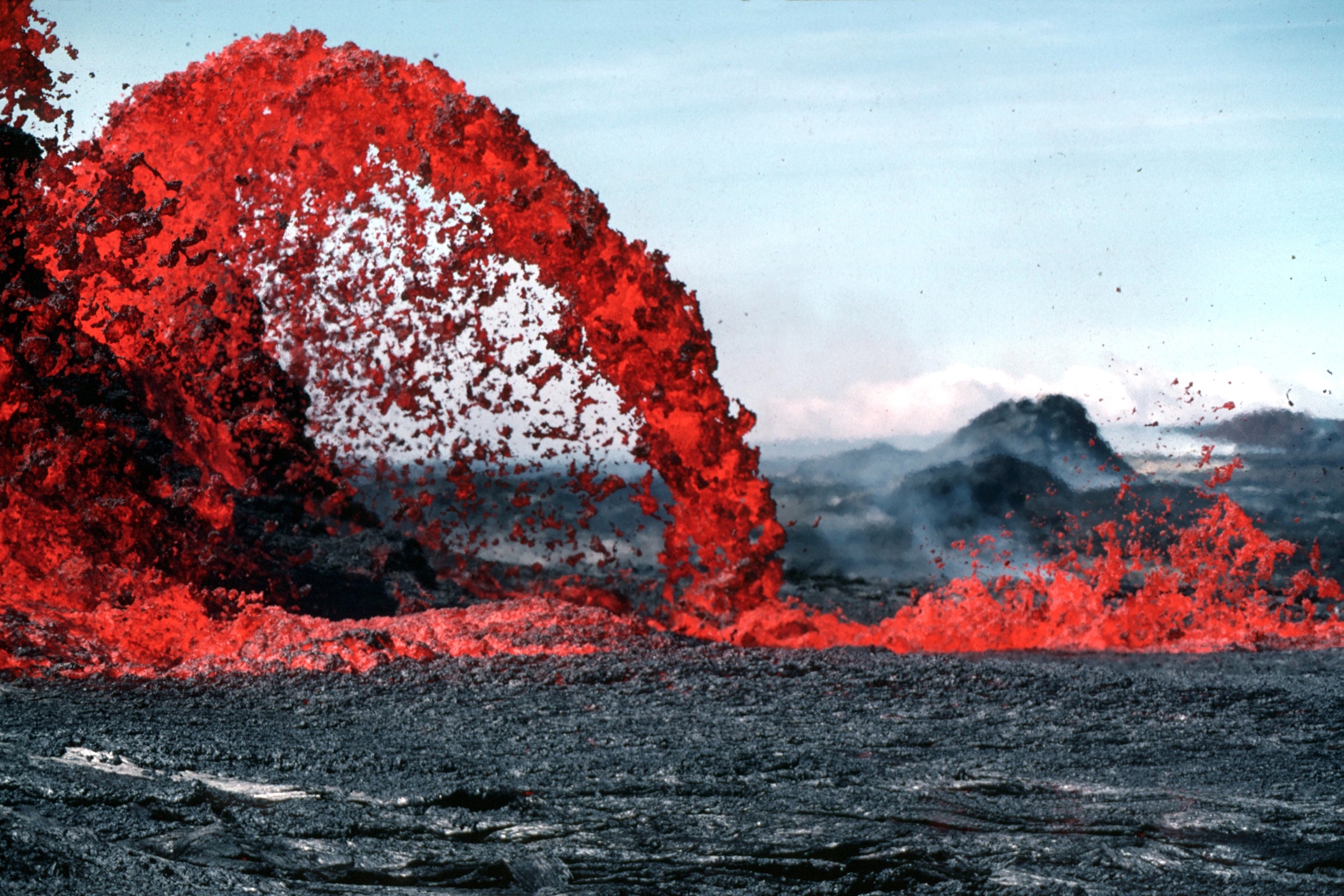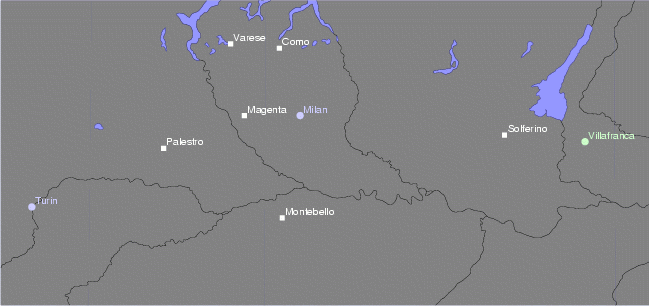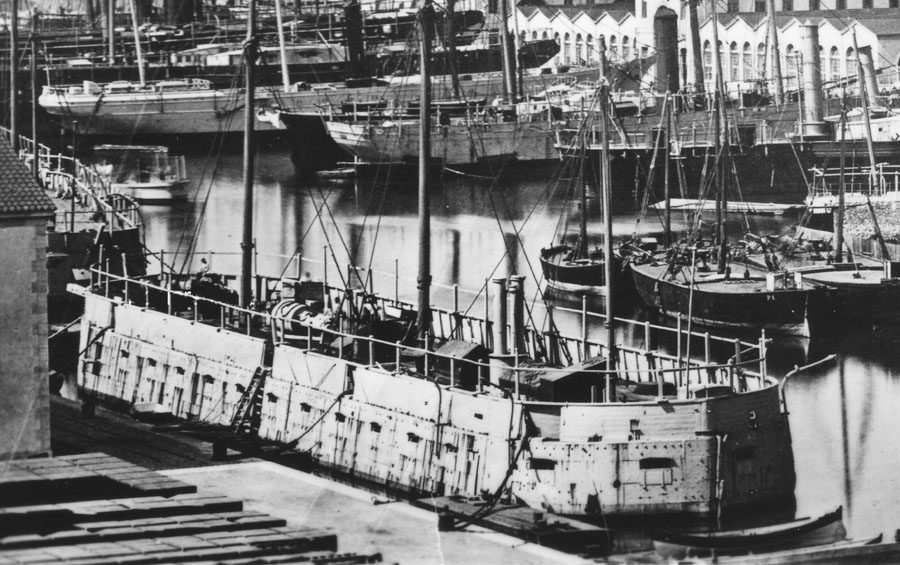|
Lave
''Lave'' was an ironclad floating battery of the French Navy during the 19th century. She was part of the of floating batteries. In the 1850s, the British and French navies deployed iron-armoured floating batteries as a supplement to the wooden steam battlefleet in the Crimean War. The role of the battery was to assist unarmoured mortar and gunboats bombarding shore fortifications. The French used three of their ironclad batteries (''Lave'', ''Tonnante,'' and ''Dévastation'') in 1855 against the defences at the Battle of Kinburn (1855) on the Black Sea, where they were effective against Russian shore defences. They would later be used again during the Italian war in the Adriatic in 1859. The ships were flat-bottomed, and commonly nicknamed "soapboxes". They were towed from France to Crimea to participate in the conflict. ''Lave'' was towed by the paddle frigate Steam frigates (including screw frigates) and the smaller steam corvettes, steam sloops, steam gunboats and stea ... [...More Info...] [...Related Items...] OR: [Wikipedia] [Google] [Baidu] |
1855 Ships
Events January–March * January 1 – Ottawa, Ontario, is incorporated as a city. * January 5 – Ramón Castilla begins his third term as President of Peru. * January 23 ** The first bridge over the Mississippi River opens in modern-day Minneapolis, a predecessor of the Father Louis Hennepin Bridge. ** The 8.2–8.3 Wairarapa earthquake claims between five and nine lives near the Cook Strait area of New Zealand. * January 26 – The Point No Point Treaty is signed in the Washington Territory. * January 27 – The Panama Railway becomes the first railroad to connect the Atlantic and Pacific Oceans. * January 29 – Lord Aberdeen resigns as Prime Minister of the United Kingdom, over the management of the Crimean War. * February 5 – Lord Palmerston becomes Prime Minister of the United Kingdom. * February 11 – Kassa Hailu is crowned Tewodros II, Emperor of Ethiopia. * February 12 – Michigan State University (the "pione ... [...More Info...] [...Related Items...] OR: [Wikipedia] [Google] [Baidu] |
Black Sea
The Black Sea is a marginal mediterranean sea of the Atlantic Ocean lying between Europe and Asia, east of the Balkans, south of the East European Plain, west of the Caucasus, and north of Anatolia. It is bounded by Bulgaria, Georgia, Romania, Russia, Turkey, and Ukraine. The Black Sea is supplied by major rivers, principally the Danube, Dnieper, and Don. Consequently, while six countries have a coastline on the sea, its drainage basin includes parts of 24 countries in Europe. The Black Sea covers (not including the Sea of Azov), has a maximum depth of , and a volume of . Most of its coasts ascend rapidly. These rises are the Pontic Mountains to the south, bar the southwest-facing peninsulas, the Caucasus Mountains to the east, and the Crimean Mountains to the mid-north. In the west, the coast is generally small floodplains below foothills such as the Strandzha; Cape Emine, a dwindling of the east end of the Balkan Mountains; and the Dobruja Plateau considerably ... [...More Info...] [...Related Items...] OR: [Wikipedia] [Google] [Baidu] |
Lorient
Lorient (; ) is a town ('' commune'') and seaport in the Morbihan department of Brittany in western France. History Prehistory and classical antiquity Beginning around 3000 BC, settlements in the area of Lorient are attested by the presence of Megalith, megalithic architecture. Ruins of Roman roads (linking Vannes to Quimper and Port-Louis, Morbihan, Port-Louis to Carhaix) confirm Gallo-Roman presence. Founding In 1664, Jean-Baptiste Colbert founded the French East Indies Company. In June 1666, an Ordonnance, ordinance of Louis XIV of France, Louis XIV granted lands of Port-Louis, Morbihan, Port-Louis to the company, along with Faouédic on the other side of the roadstead. One of its directors, Denis Langlois, bought lands at the confluence of the Scorff and the Blavet rivers, and built slipways. At first, it only served as a subsidiary of Port-Louis, where offices and warehouses were located. The following years, the operation was almost abandoned, but in 1675, durin ... [...More Info...] [...Related Items...] OR: [Wikipedia] [Google] [Baidu] |
France
France (), officially the French Republic ( ), is a country primarily located in Western Europe. It also comprises of overseas regions and territories in the Americas and the Atlantic, Pacific and Indian Oceans. Its metropolitan area extends from the Rhine to the Atlantic Ocean and from the Mediterranean Sea to the English Channel and the North Sea; overseas territories include French Guiana in South America, Saint Pierre and Miquelon in the North Atlantic, the French West Indies, and many islands in Oceania and the Indian Ocean. Due to its several coastal territories, France has the largest exclusive economic zone in the world. France borders Belgium, Luxembourg, Germany, Switzerland, Monaco, Italy, Andorra, and Spain in continental Europe, as well as the Netherlands, Suriname, and Brazil in the Americas via its overseas territories in French Guiana and Saint Martin. Its eighteen integral regions (five of which are overseas) span a combined area of ... [...More Info...] [...Related Items...] OR: [Wikipedia] [Google] [Baidu] |
Ships Built In France
A ship is a large watercraft that travels the world's oceans and other sufficiently deep waterways, carrying cargo or passengers, or in support of specialized missions, such as defense, research, and fishing. Ships are generally distinguished from boats, based on size, shape, load capacity, and purpose. Ships have supported exploration, trade, warfare, migration, colonization, and science. After the 15th century, new crops that had come from and to the Americas via the European seafarers significantly contributed to world population growth. Ship transport is responsible for the largest portion of world commerce. The word ''ship'' has meant, depending on the era and the context, either just a large vessel or specifically a ship-rigged sailing ship with three or more masts, each of which is square-rigged. As of 2016, there were more than 49,000 merchant ships, totaling almost 1.8 billion dead weight tons. Of these 28% were oil tankers, 43% were bulk carriers, and 13% w ... [...More Info...] [...Related Items...] OR: [Wikipedia] [Google] [Baidu] |
Adriatic
The Adriatic Sea () is a body of water separating the Italian Peninsula from the Balkan Peninsula. The Adriatic is the northernmost arm of the Mediterranean Sea, extending from the Strait of Otranto (where it connects to the Ionian Sea) to the northwest and the Po Valley. The countries with coasts on the Adriatic are Albania, Bosnia and Herzegovina, Croatia, Italy, Montenegro, and Slovenia. The Adriatic contains more than 1,300 islands, mostly located along the Croatian part of its eastern coast. It is divided into three basins, the northern being the shallowest and the southern being the deepest, with a maximum depth of . The Otranto Sill, an underwater ridge, is located at the border between the Adriatic and Ionian Seas. The prevailing currents flow counterclockwise from the Strait of Otranto, along the eastern coast and back to the strait along the western (Italian) coast. Tidal movements in the Adriatic are slight, although larger amplitudes are known to occur occasion ... [...More Info...] [...Related Items...] OR: [Wikipedia] [Google] [Baidu] |
Paddle Frigate
Steam frigates (including screw frigates) and the smaller steam corvettes, steam sloops, steam gunboats and steam schooners, were steam-powered warships that were not meant to stand in the line of battle. There were some exceptions like for example the French Napoléon class steam ship of the line was meant to stand in the line of battle, making it the world's first steam battleship. The first such ships were paddle steamers. Later on the invention of screw propulsion enabled construction of steam-powered versions of the traditional ships of the line, frigates, corvettes, sloops and gunboats. Evolution First steam warships The first small vessel that can be considered a steam warship was the ''Demologos'', which was launched in 1815 for the United States Navy. From the early 1820s, the British Navy began building a number of small steam warships including the armed tugs and , and by the 1830s the navies of America, Russia and France were experimenting with steam-powered wars ... [...More Info...] [...Related Items...] OR: [Wikipedia] [Google] [Baidu] |
Lava
Lava is molten or partially molten rock ( magma) that has been expelled from the interior of a terrestrial planet (such as Earth) or a moon onto its surface. Lava may be erupted at a volcano or through a fracture in the crust, on land or underwater, usually at temperatures from . The volcanic rock resulting from subsequent cooling is also often called ''lava''. A lava flow is an outpouring of lava during an effusive eruption. (An explosive eruption, by contrast, produces a mixture of volcanic ash and other fragments called tephra, not lava flows.) The viscosity of most lava is about that of ketchup, roughly 10,000 to 100,000 times that of water. Even so, lava can flow great distances before cooling causes it to solidify, because lava exposed to air quickly develops a solid crust that insulates the remaining liquid lava, helping to keep it hot and inviscid enough to continue flowing. The word ''lava'' comes from Italian and is probably derived from the Latin word ''l ... [...More Info...] [...Related Items...] OR: [Wikipedia] [Google] [Baidu] |
Second Italian War Of Independence
The Second Italian War of Independence, also called the Franco-Austrian War, the Austro-Sardinian War or Italian War of 1859 ( it, Seconda guerra d'indipendenza italiana; french: Campagne d'Italie), was fought by the Second French Empire and the Savoyard Kingdom of Sardinia against the Austrian Empire in 1859 and played a crucial part in the process of Italian Unification. A year prior to the war, in the Plombières Agreement, France agreed to support Sardinia's efforts to expel Austria from Italy in return for territorial compensation in the form of the Duchy of Savoy and the County of Nice. The two states signed a military alliance in January 1859. Sardinia mobilised its army on 9 March 1859, and Austria mobilized on 9 April. On 23 April, Austria delivered an ultimatum to Sardinia demanding its demobilization. Upon Sardinia's refusal, the war began on 26 April. Austria invaded Sardinia three days later, and France declared war on Austria on 3 May. The Austrian invasi ... [...More Info...] [...Related Items...] OR: [Wikipedia] [Google] [Baidu] |
Battle Of Kinburn (1855)
The Battle of Kinburn, a combined land-naval engagement during the final stage of the Crimean War, took place on the tip of the Kinburn Peninsula (on the south shore of the Dnieper–Bug estuary in what is now Ukraine) on 17 October 1855. During the battle a combined fleet of vessels from the French Navy and the British Royal Navy bombarded Russian coastal fortifications after an Anglo-French ground force had besieged them. Three French ironclad batteries carried out the main attack, which saw the main Russian fortress destroyed in an action that lasted about three hours. The battle, although strategically insignificant with little effect on the outcome of the war, is notable for the first use of modern ironclad warships in action. Although frequently hit, the French ships destroyed the Russian forts within three hours, suffering minimal casualties in the process. This battle convinced contemporary navies to design and build new major warships with armour plating; this insti ... [...More Info...] [...Related Items...] OR: [Wikipedia] [Google] [Baidu] |






